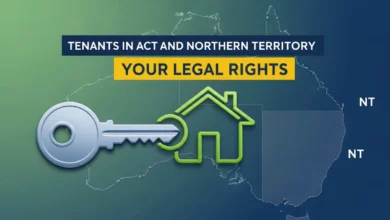What Can I Do About Mould? A Complete Guide for Homes in 2025

Mould has become a growing concern for many households As of 2025, experts warn that mould is not just an eyesore it can also affect your health and damage your property. If you are asking “What can I do about mould?” you are not alone. Many people face this problem in bathrooms kitchens bedrooms and even living rooms. The good news is that mould can be managed if you understand its causes and take the right steps.
This guide will walk you through everything you need to know from prevention and cleaning methods to landlord responsibilities and health tips.
Understanding What Mould Is
Mould is a type of fungus that grows in damp and poorly ventilated areas. It often appears as black green or white spots on walls ceilings tiles or furniture. Mould spreads through tiny spores that travel in the air and thrive when moisture is present.
Why Mould Is a Problem
Mould is more than just a cosmetic issue. It can:
- Damage paint wallpaper and furniture
- Create unpleasant smells
- Trigger allergies and asthma
- Lead to long-term health issues if left untreated
Tip: If you can smell a musty odour at home mould might be present even if you cannot see it yet.
Common Causes of Mould
Mould grows when there is too much moisture indoors. Common causes include:
- Leaking pipes or roofs
- Condensation from showers cooking or drying clothes inside
- Poor ventilation in bathrooms and kitchens
- Flooding or water damage
Question: Why does mould come back even after cleaning?
Answer: If the source of moisture is not fixed mould will return. Cleaning only removes the surface growth not the cause.
Signs of Mould in Your Home
Look for these signs:
- Black or green spots on ceilings and walls
- Peeling paint or bubbling wallpaper
- Persistent damp or musty smells
- Windows fogging up often
Practical Tip: Use a torch to check hidden areas like behind furniture or inside wardrobes.
Health Risks Linked to Mould
Mould exposure can cause:
- Sneezing and coughing
- Red or itchy eyes
- Skin rashes
- Asthma attacks
In severe cases mould can worsen existing respiratory problems. Children the elderly and people with weak immune systems are at higher risk.
Question: Can mould make me sick?
Answer: Yes. Long-term exposure can affect your lungs and overall health so it should not be ignored.
How to Prevent Mould
Prevention is the best solution. Here are easy steps:
- Open windows daily to improve airflow
- Use exhaust fans in bathrooms and kitchens
- Wipe down wet surfaces after showers or cooking
- Avoid drying clothes indoors
- Repair leaks quickly
Tip: A dehumidifier can help reduce moisture in humid climates.
Cleaning Small Mould Patches
For small areas you can try:
- Vinegar spray: Mix white vinegar with water and spray directly on mould. Leave it for an hour before wiping.
- Baking soda: Use with water to scrub mouldy tiles.
- Mould cleaners: Available in supermarkets for quick use.
Safety Tip: Wear gloves and a mask when cleaning to protect yourself from spores.
When to Call Professionals
Sometimes mould is too much to handle on your own. Call a professional if:
- The affected area is larger than one square metre
- Mould keeps returning even after cleaning
- You suspect mould inside walls ceilings or air-conditioning systems
Professionals can remove mould safely and fix hidden moisture problems.
Read More: Renting Advice in Australia: A Complete Guide for Tenants in 2025
Mould in Rental Properties
If you are renting mould can be a tricky issue.
- Landlord’s responsibility: If mould is caused by leaks structural issues or poor ventilation the landlord must fix it.
- Tenant’s responsibility: If mould is caused by not using fans leaving windows closed or poor housekeeping the tenant may need to clean it.
Question: What should I do if my rental has mould?
Answer: Report it in writing to your property manager. Include photos for evidence and request repairs.
Government and Legal Support
In Australia and many other countries tenancy laws protect renters from unsafe living conditions. You can:
- Contact your local tenancy authority for advice
- Lodge a complaint if the landlord refuses to act
- Request urgent repairs if mould affects health and safety
Dealing With Mould After Flooding
Floods and storms can cause serious mould growth. In this case:
- Remove wet carpets and furniture quickly
- Dry the property with fans and heaters
- Get professional help for deep cleaning
Practical Tip: Never leave soaked belongings indoors as mould can grow within 48 hours.
Natural vs Chemical Solutions
Many people ask whether natural cleaners are enough.
- Natural options like vinegar and baking soda are safe for small spots.
- Chemical options are stronger but should be used carefully. Always ventilate the area and follow instructions.
Common Mistakes to Avoid
- Only wiping mould without fixing leaks
- Painting over mouldy walls without cleaning first
- Using bleach on porous surfaces like wood or plaster
- Ignoring small patches that later spread
Frequently Asked Questions (FAQ)
Can I paint over mould?
No. Mould will grow back through the paint. Always clean and dry the surface first.
Does sunlight kill mould?
Yes. Mould does not like dry and sunny conditions. Open curtains and let natural light in.
Is all mould dangerous?
Not all moulds are toxic but any mould can trigger allergies and breathing issues
How fast does mould grow?
Mould can start growing within 24–48 hours in damp conditions.



